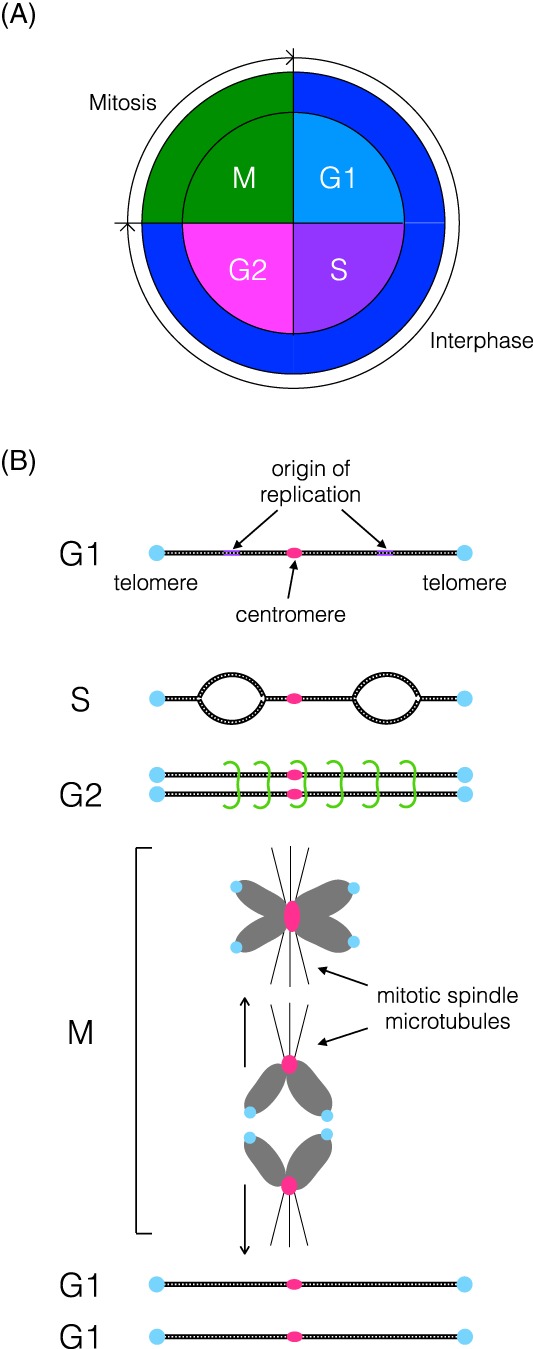Figure 2.

The eukaryotic cell and chromosome cycle: (A) The eukaryotic cell cycle is divided into mitosis and interphase, and interphase is further subdivided into G1, S and G2. DNA is duplicated in S phase, the chromosomes condense and segregate in M phase, and these phases are separated by Gap (growth) phases called G1 and G2. (B) Each chromosome has telomeres (blue) at its ends, a centromere (pink), to which spindle microtubules attach at M phase, and multiple origins of DNA replication (purple). In S and G2, the replicated chromosomes are held together by cohesin (green). At M, the chromosomes condense, align at the metaphase plate, individualize and are separated from one another by the mitotic spindle after cohesin release. The centromeres are at the leading edge of this mitotic chromosome movement, the telomeres trail behind, and some cell types retain this polarized positioning, called the Rabl orientation in G1, even after chromosome decondensation23, 24
